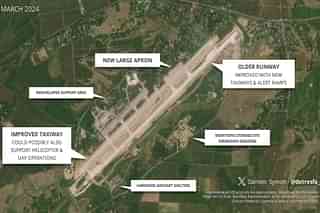Defence
DRDO Is Planning To Test Astra Mk-2 Missile; Here's A Lowdown On The New 130 KM Range Air-To-Air Missile
Ujjwal Shrotryia
Apr 18, 2024, 04:55 PM | Updated 07:40 PM IST
Save & read from anywhere!
Bookmark stories for easy access on any device or the Swarajya app.

The Defence Research and Development Organisation (DRDO) is planning to test the new long-range Astra Mk-2 Air-to-Air (A2A) Beyond Visual Range (BVR) missile in the next few months.
The Astra Mk-2 is a longer-range variant of the Astra Mk-1 A2A BVR missile, which is currently used by the Indian Air Force (IAF) from the Russian Sukhoi-30 MKI jet.
Two years ago, in May 2022, the IAF and the Indian Navy ordered 248 Astra Mk-1 missiles — 200 for the IAF and 48 for the Navy — at a cost of Rs 2,971 crores from Bharat Dynamics Limited (BDL).
All the missiles are expected to be delivered within six years from the date of signing the contract.
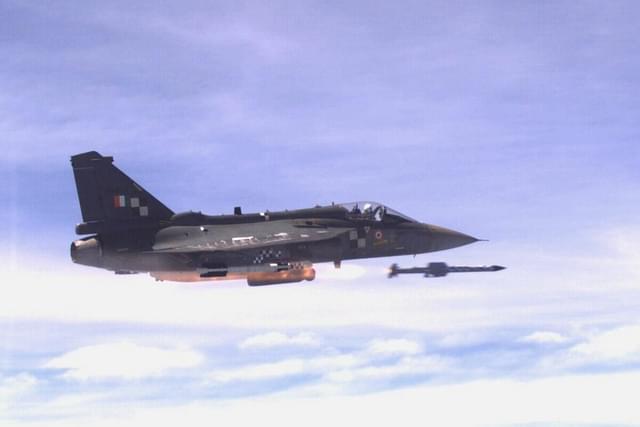
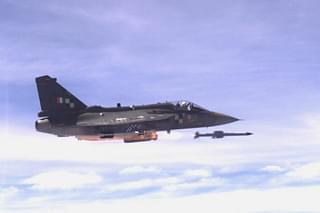
Both the Astra Mk-1 and Astra Mk-2 missiles are capable of destroying aerial targets such as fighter jets, cargo planes, helicopters, cruise missiles, and drones at ranges extending well over 100 kilometres, depending on the launch altitude.
At sea level, the maximum strike range of the Astra Mk-1 reduces to just over 20 kilometres due to increased air drag near the ground.
Notably, the maximum range of the missiles depends on various factors, including the launch altitude, the speed of the carrier jet at the time of missile launch, whether the target is flying away from or towards the missile, whether the target is a fast-moving maneuvering jet or a large slow-moving cargo plane, and the altitude of the target.
When launched from high altitudes against slow-moving large airplanes, the 3.84-metre-long and 154-kg Astra Mk-1 missile has a maximum range of 110 kilometres.
The Astra Mk-2 missile effectively doubles the strike range of the Astra Mk-1.
Unlike the single-pulse rocket motor of the Astra Mk-1, the Astra Mk-2 uses a dual-pulse rocket motor, which dramatically increases its range and kill probability (Pk).
The single-pulse rocket motor in the Astra Mk-1 burns its entire solid propellant in one go during the launch phase, imparting high kinetic energy and velocity to the missile, to the tune of 4.5 Mach or above.
After the propellant burns out, the missile coasts down without any power, relying simply on gravity and kinetic energy.
The farther away the target, the more the A2A missile slows down due to air drag. This limits the end-game kinematics of the missile — essentially the maneuvering capability of the missile when it reaches close to its target.
This is precisely what the dual-pulse rocket motor aims to address.
In the endgame, the second pulse of the dual-pulse motor fires, giving additional velocity and kinetic energy to the missile, providing either additional range or better end-game kinematics for a higher probability of kill (Pk).
It is expected that the missile will have a maximum range of anywhere between 130 and 160 kilometres.
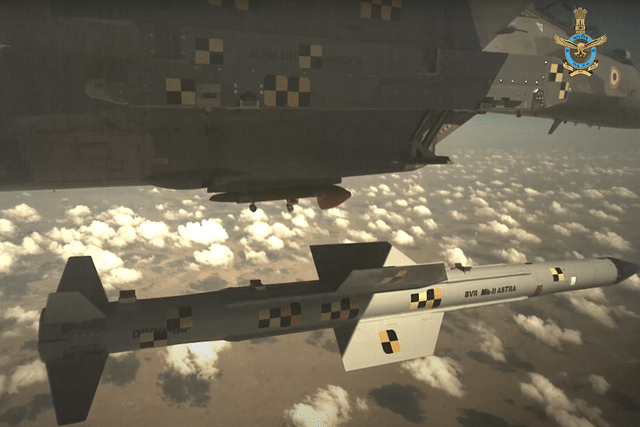
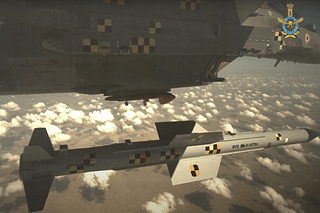
The static firing and separation trials of the Astra Mk-2 from the Sukhoi Su-30 MKI jet have already been completed. In 2022, the IAF released a promotional video displaying a dummy Astra Mk-2 test separating from a Su-30 MKI.
Just like the Astra Mk-1, which is already integrated on the Su-30 MKI and in the process of being integrated on the Tejas Mk-1 and the Indian Navy's Mig-29K, the Astra Mk-2 will also be integrated on these jets, in addition to the upcoming Tejas Mk-2 and AMCA stealth jet.
Another more advanced and longer-range missile — Astra Mk-3 is under development, as well.
This missile will be using solid-fueled ducted ramjet (SFDR) engine giving the missile a maximum strike of range of more than 300 kilometres.
The Astra Mk-3 missile will rival the French-made Rafale fighter jet's primary long-range Meteor BVR missile.
Save & read from anywhere!
Bookmark stories for easy access on any device or the Swarajya app.
Editorial Associate at Swarajya. Writes on Indian Military and Defence.
Introducing ElectionsHQ + 50 Ground Reports Project
The 2024 elections might seem easy to guess, but there are some important questions that shouldn't be missed.
Do freebies still sway voters? Do people prioritise infrastructure when voting? How will Punjab vote?
The answers to these questions provide great insights into where we, as a country, are headed in the years to come.
Swarajya is starting a project with an aim to do 50 solid ground stories and a smart commentary service on WhatsApp, a one-of-a-kind. We'd love your support during this election season.
Click below to contribute.



